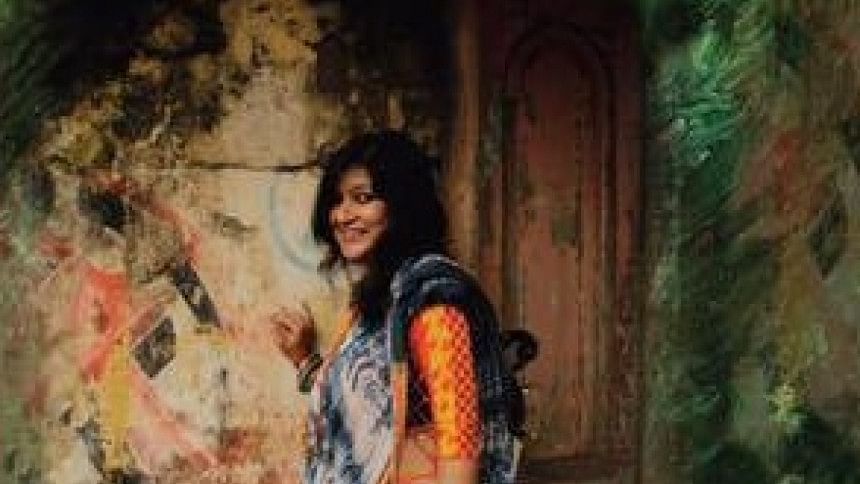Rediscovering Sahana Bajpaie

I have known Sahana Bajpaie as a Rabindra Sangeet singer extraordinaire. She did introduce a very contemporary, unpretentious way of rendering songs of a genre that was, for some reason, known to young Bangladeshis for its rigidity (ironically enough) until then. As a friend, I know her upbringing in Shantiniketan – steeped in everything Tagore – means she lives and breathes the bard's verses but doesn't confine herself in a bubble detached from the non-idyllic world. In short, her craft is an extension of who she is; the artiste and the person are not two separate identities. So, when she announced that she was working on an album of Bangla folk songs, I was genuinely excited – mostly about what a fresh, new approach it would entail.
Fast-forward a few months and I'm listening to Mon Bandhibi Kemone – a collection of eight folk songs recorded by Sahana. The album has been produced by Hindustan INRECO and Rabiul Islam, Agami TV (USA).Samantak Sinha and Satyaki Banerjee – long-time musical collaborators (from Kolkata) of Sahana – have arranged music for the album.
Disclaimer: Since I know the artiste personally, I understand the fairness of this “review” might be questioned. So, let's not call this a review; let's call this an observation.

The first song I played is Ami aupaar hoye – despite it being the third track of the album – because that's what one does, start off with a prayer. Lalon's timeless prayer gets the proper treatment: Idris Rahman's clarinet gets you in the mood for the musical voyage you're about to embark on; Sahana's vocals cut through the chaos of mundane surrounding that we know as the “real world”; Mal Darwen's acoustic guitar complements the late autumn-dewdrop freshness.
Next, I listened to Maya, because I was eager to find out how Sahana's rendition varied from Habib Wahid's arrangement that familiarised this Shah Abdul Karim classic to urban ears like mine. The two versions clearly belong to different genres. For me, this was the revelation point: this is not the Sahana who recorded Notun Kore Pabo Bole. Eyes closed, I could visualise a folk artiste performing under the larger-than-life canopy of a banyan tree on a full moon night. Swarup Mukherjee's baNshi and Satyaki Banerjee's dotara complete the ambiance to a T. I recalled Sahana saying that some of the songs were recorded live in the studio – maintaining a quintessential folk arrangement— to capture the true spirit of the genre.
The closing number, Bhoba Pagla's Ekhono shei Brindaboney, takes you to a Raas Leela performance at a Manipuri village. The combination of percussion (by Arunabha Gupta) and baNshi weave the authentic backdrop against which the vocals shine.
Amar haath bandhibi, the titular song, is a transition. It's a folk song indeed, but it's folk done from an urban, polished sense of aesthetics. In a sense, this number is the bridge between Sahana, the Rabindra Sangeet artist, and Sahana, the folk singer. Some might feel this cover is “not folk enough”. According to the artiste: this song was collected by Santanu Dutta, a musicologist residing in Shantiniketan, from a singer in a village near Behrampore, West Bengal, though the first line is reminiscent of Shah Abdul Karim's Amar haath bandhibo faao bandhibo. That is the beauty and magic of folk songs – they travel; and when they do, they naturally take on the identity of their new home and become something else.
I'd say this album is a must-have but unfortunately it's not available in Bangladesh yet. The songs are, fortunately, available on iTunes and other online music stores.
The writer is Editor, SHOUT.

 For all latest news, follow The Daily Star's Google News channel.
For all latest news, follow The Daily Star's Google News channel. 



Comments